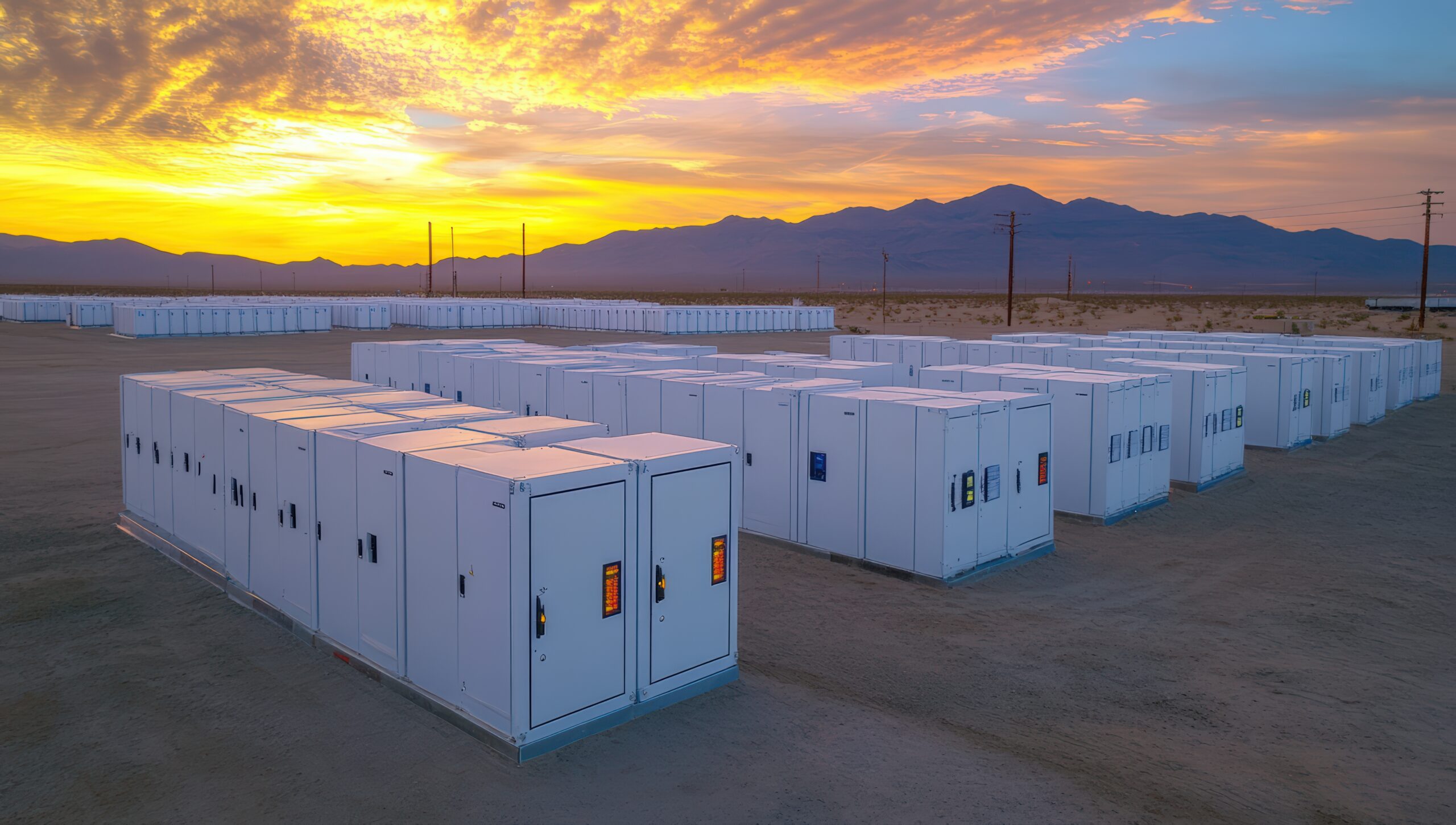The blackout on mainland Spain and Portugal in April 2025 underscored the vulnerabilities inherent in energy grids that must manage fluctuating electricity supply. The incident, triggered by a voltage surge, resulted in power outages for millions of people and disrupted transportation, communication and public services. One solution to prevent such occurrences in the future lies in stationary battery storage systems; large battery facilities that can respond within milliseconds to stabilize voltage and frequency. The practice is already being implemented at scale in other regions of the world. With rising energy consumption and the intermittent nature of renewable sources, battery storage is emerging as a crucial element in energy management—a mega trend in the battery cosmos.
Expanding Battery Storage Capacity
The demand for reliable energy solutions is catalysing a rapid growth in battery storage capacity worldwide. According to energy research firm BNEF, global battery storage volume is projected to increase by 67% to 617 GWh this year, with expectations of tenfold growth by 2035. The United States and China dominate the market, accounting for about 70% of all battery storage projects. Additionally, countries such as Australia, Saudi Arabia and Chile are ramping up their storage capacities. The urgent need for effective energy storage solutions is driven by factors like the rise of energy-intensive technologies and the transition to renewable energy sources.

Technological Advancements
Recent advancements in battery technology have led to significant improvements in efficiency and cost-effectiveness. The global average price of battery storage systems has more than halved over the past two years, while lithium-ion battery costs have decreased by 90% since 2010. Current battery systems can deliver higher energy outputs, with standard storage units now capable of providing around 5-6 MWh, compared to the earlier 3-4 MWh models. This progress has resulted in the establishment of numerous battery farms, with 42 gigawatt-scale facilities currently operational globally, and more expected in the near future. Especially in conjunction with photovoltaic systems, battery storage shows a synergistic effect by enabling efficient storage of surplus solar energy (according to research by Fraunhofer ISE).
Market Dynamics
China’s leadership in the battery storage sector is significant, with the country having more forthcoming projects than the rest of the world combined. Domestic demand in China is projected to rise dramatically, driven by the transition from coal to renewable energy. Predictions indicate a 90% year-on-year increase in battery storage capacity by the end of 2025. In the US, despite potential challenges from government policies, continued growth in battery storage deployment is anticipated, particularly in states such as Texas and California, where energy demand is increasing rapidly and climate conditions are ideal.

Economic Opportunities
Batteries can store excess energy generated during peak solar hours for use during high-demand periods which allows grid operators to manage fluctuations effectively. In California, utility companies are increasingly employing battery storage to mitigate the impacts of wildfires on power supply. This demonstrates the range of services and revenue streams storage systems can tap into. As power prices become more volatile, due to fluctuating renewable energy sources, integrating battery storage into energy systems presents substantial economic opportunities for both providers and consumers.
Challenges and Regulatory Hurdles
Despite the favourable outlook for battery storage, several challenges remain. Research from the Energy Transitions Commission (ECT) indicates that while batteries can fullfill power balancing needs in sunbelt regions, they may not be sufficient in areas that rely heavily on wind power, where energy generation is less predictable. Additionally, the rapid expansion of renewable energy installations has overwhelmed grid operators, leading to significant backlogs in connection requests. Typically, the absence of clear, long-term policies can create uncertainties for investors and developers.

The Future of Energy Storage
As the energy landscape evolves, battery storage will play a pivotal role. Combining renewable sources and advanced storage technologies could significantly lower clean power costs, especially in regions with optimal solar conditions. However, further advancements in battery materials and supportive regulations are needed to address existing limitations. Continued investment in energy storage solutions will shape resilient energy systems that meet future demands. The convergence of innovation, market dynamics, and regulations positions battery storage as vital in the global energy landscape, enhancing grid stability and facilitating a sustainable energy future.
Enroll into our Online Battery Training and broaden your knowledge in Battery Manufacturing and the Battery Market. Unlock your Fraunhofer Certificate and get to know cutting-edge knowledge with use cases from industry. The EBBC provides unique lifelong learning programs that will enhance your career and understanding of the rapid energy transformation.
Further readings:
- Global Energy Storage Growth Upheld by New Markets, Bloomberg New Energy Finance (BNEF)
- On Mega Batteries, Financial Times
- Battery Storage – Key Enabler for Large-Scale Integration of Renewable Energies, Fraunhofer ISE Presentation
- Power Systems Transformation: Delivering Competitive, Resilient Electricity in High-Renewable Systems, Energy Transitions Commission (ETC)
FAQs on Battery Storage Systems
Why is battery storage becoming a global mega trend?
Battery storage systems are trending because they help stabilize grids with fluctuating renewable energy by storing surplus power and releasing it when demand rises.
What is the projected growth of global battery storage capacity?
Global battery storage volume is expected to experience tenfold growth by 2035, with a 67% increase to 617 GWh projected for this year.
Which countries are leading the battery storage market?
The United States and China dominate the battery storage market, accounting for about 70% of all projects, with significant growth also occurring in Australia, Saudi Arabia, and Chile.
What economic benefits does large-scale battery storage offer?
Large battery storage systems enable utilities to manage demand peaks, reduce blackout risks, and profit from energy price fluctuations and grid services.
What challenges does the battery storage sector currently face?
Challenges include insufficient power balancing in wind-dependent areas, overwhelmed grid operators due to rapid renewable energy expansion, and the lack of clear, long-term policies for investors and developers.




